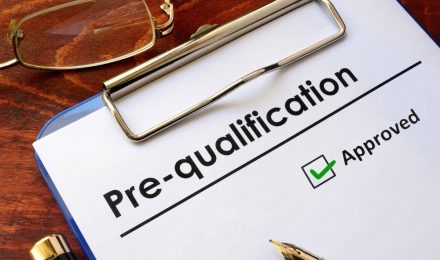Far too many people are juggling multiple credit card balances, high-interest loans, or medical bills. If you are one them then debt consolidation could offer you a path to relief. By using a personal loan for debt consolidation, you can roll multiple debts into one monthly payment with a fixed interest rate. The right consolidation loan can save money, reduce stress, and help you pay off debt faster.
What is Debt Consolidation with a Personal Loan?
Debt consolidation means taking out a new loan to pay off multiple existing debts. Instead of managing several credit cards with varying due dates and rates, you make one fixed monthly payment. Personal loans are ideal for this strategy because they offer clear repayment timelines, fixed APRs, and predictable costs.
The Consumer Financial Protection Bureau (CFPB) highlights that APR disclosure under TILA allows borrowers to compare offers fairly and select the most affordable option.
When Consolidation Makes Sense
Debt consolidation with a personal loan is most beneficial when the new loan has a lower APR than your current weighted average interest rate. For example, replacing credit cards charging 22% APR with a personal loan at 12% APR can yield significant savings.
This approach also simplifies budgeting. Instead of juggling multiple minimum payments, you’ll know exactly how much is due and when.
Benefits and Risks
Benefits include:
- Lower interest costs over time.
- Simplified repayment with one predictable monthly bill.
Risks exist as well. Borrowers who consolidate but continue to run up balances on their credit cards may find themselves in even deeper debt. Some personal loans also carry origination fees, which must be factored into cost comparisons.
How to Choose the Right Consolidation Loan
Finding the right loan requires more than picking the first offer. Focus on APR, repayment terms, and any prepayment penalties. It’s also wise to check whether the lender offers direct payment to creditors, which ensures the loan fulfills its intended purpose.
Explore our guides on How to Pre-Qualify for a Personal Loan and Personal Loan vs. Credit Card to see how consolidation compares with other strategies.
Alternatives to Consolidation Loans
Some borrowers may qualify for balance transfer credit cards offering 0% APR for an introductory period. Others might benefit from negotiating with creditors for reduced interest or extended repayment plans. These options can work, but they come with limitations—balance transfers often carry fees and introductory periods that end quickly, while creditor negotiations can damage credit if payments are missed.
Conclusion
Debt consolidation with a personal loan is not a silver bullet, but when chosen wisely, it can be a powerful step toward financial stability. By focusing on APR, ensuring you have a plan to avoid new debt, and comparing multiple offers, you can simplify your finances and save money.
References
- Consumer Financial Protection Bureau (CFPB). “What is the annual percentage rate (APR) on a loan or credit card?”
- Federal Trade Commission (FTC). “Dealing with Debt.”
- Experian. “Personal Loan Debt Consolidation: How It Works.”
Far too many people are juggling multiple credit card balances, high-interest loans, or medical bills. If you are one them then debt consolidation could offer you a path to relief. By using a personal loan for debt consolidation, you can roll multiple debts into one monthly payment with a fixed interest rate. The right consolidation loan can save money, reduce stress, and help you pay off debt faster.
What is Debt Consolidation with a Personal Loan?
Debt consolidation means taking out a new loan to pay off multiple existing debts. Instead of managing several credit cards with varying due dates and rates, you make one fixed monthly payment. Personal loans are ideal for this strategy because they offer clear repayment timelines, fixed APRs, and predictable costs.
The Consumer Financial Protection Bureau (CFPB) highlights that APR disclosure under TILA allows borrowers to compare offers fairly and select the most affordable option.
When Consolidation Makes Sense
Debt consolidation with a personal loan is most beneficial when the new loan has a lower APR than your current weighted average interest rate. For example, replacing credit cards charging 22% APR with a personal loan at 12% APR can yield significant savings.
This approach also simplifies budgeting. Instead of juggling multiple minimum payments, you’ll know exactly how much is due and when.
Benefits and Risks
Benefits include:
- Lower interest costs over time.
- Simplified repayment with one predictable monthly bill.
Risks exist as well. Borrowers who consolidate but continue to run up balances on their credit cards may find themselves in even deeper debt. Some personal loans also carry origination fees, which must be factored into cost comparisons.
How to Choose the Right Consolidation Loan
Finding the right loan requires more than picking the first offer. Focus on APR, repayment terms, and any prepayment penalties. It’s also wise to check whether the lender offers direct payment to creditors, which ensures the loan fulfills its intended purpose.
Explore our guides on How to Pre-Qualify for a Personal Loan and Personal Loan vs. Credit Card to see how consolidation compares with other strategies.
Alternatives to Consolidation Loans
Some borrowers may qualify for balance transfer credit cards offering 0% APR for an introductory period. Others might benefit from negotiating with creditors for reduced interest or extended repayment plans. These options can work, but they come with limitations—balance transfers often carry fees and introductory periods that end quickly, while creditor negotiations can damage credit if payments are missed.
Conclusion
Debt consolidation with a personal loan is not a silver bullet, but when chosen wisely, it can be a powerful step toward financial stability. By focusing on APR, ensuring you have a plan to avoid new debt, and comparing multiple offers, you can simplify your finances and save money.
References
- Consumer Financial Protection Bureau (CFPB). “What is the annual percentage rate (APR) on a loan or credit card?”
- Federal Trade Commission (FTC). “Dealing with Debt.”
- Experian. “Personal Loan Debt Consolidation: How It Works.”







